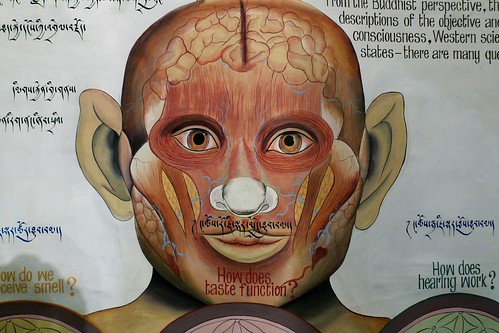Your Senses Are Your Raw Information Learning Portals
Quickly, name your five senses.
That’s easy! Right?
Sight, smell, hearing, touch and taste.
Now, what percentage of information comes though each sense?
That one is not so easy.
Here’s another way to think about this. How much information do we gather from each sense in the same amount of time as compared to the other senses? For the moment, assume that each of your senses works perfectly.
Senses: What The Research Tells Us About Their Abilities
Neuroscience and cognitive psychology research has uncovered the amazing power of our senses. This was unimaginable a few years ago.
According to researchers Dr. L.D. Rosenblum, Dr. Harold Stolovitch and Dr Erica Keeps, here’s how much information each of our senses processes at the same time as compared to our other senses.
83.0% – Sight
11.0% – Hearing
03.5% – Smell
01.5% – Touch
01.0% – Taste
That’s surprising. And it flies in the face of some of our conventional educational theories like VAK (visual, auditory and kinesthetic) and Learning Styles. No matter how you slice the pie, our brains give preference to processing vision as compared to our other senses.
Not convinced?
Dr. Stolovitch and Dr. Keeps use the following examples to help us understand this better.
Imagine you’re in an open field. How far can you see? About 50 miles. How far can you hear? Maybe a mile or two. How about smell? 10-20 yards, assuming that the wind is not blowing. How about touch? Just an arm’s length. Taste? A couple of inches.
Senses As Learning Portals
As learners, each of our senses has different processing capacities.
Sight is the major sense and extremely important to learning. Hearing is also important because we acquire our language skills as young children through our hearing. Language gives us the ability to name and explain our experiences. Together sight and hearing help us perceive much of the world around us.
The more our senses are engaged in meaningful and structured methods, the more easily learning can occur. Ultimately, our senses act as learning portals. All raw information enters our brains through those learning portals. Our challenge is making meaning from that information and connecting it with previous experiences and past knowledge.
Do we perceive all of the information bombarding our senses? Do we have the ability to selectively filter out unnecessary or irrelevant information coming in through our senses?



Hello, it is a very interesting lil article you present her. But I’ve got a little question about it. As I am doing research for my thesis at the moment, I’m looking for statistics that say that sight and hearing are the most important senses. So, here I find the statistics. Can you please tell me, what is the source of this statistics? I bought the Rosenblum-Book that you linked, but I can’t find it in there. The more official the statistics (scientific paper or book), its even better. The name of the document would already help me look, just for the reference.
Thank you a lot,
regards, Stefan
Stefan:
Here are two sources for those stats: Telling Ain’t Training, Chapter Three, The Human Learner, pages 19-22 by Dr. Harold D. Stolovitch and Dr. Eric J Keeps and Brain Rules, Chapter 10, Vision Trumps All Other Senses by Dr. Jon Medina, pages 221-231. Dr. Median is a neuroscientists and lists additional sources in his book. There is some additional data on this page of his website http://brainrules.net/vision. Dr. Stolovitch and Dr. Keeps are cognitive researchers and also list additional sources in their book. Hope that helps you some.
[…] should remember that attendees have multiple senses, each with different processing capacities. The more an attendees’ senses are engaged in meaningful and organized ways, the more easily […]
[…] you’re learning something, involve as many senses as possible to help retain the […]
[…] you’re learning something, involve as many senses as possible to help retain the […]
[…] you’re learning something, involve as many senses as possible to help retain the […]
[…] time span. Keeping in mind that our brain processes visuals 60,000 times faster than text and 83% of the information our brains process comes in through our sense of sight, there is no second […]
[…] images in approximately 13 milliseconds. Our brains give preference to visual information – 83% of the information the brain gathers comes via the optic nerves. Still, even with our dominant reliance on visuals, and the ongoing rise of video as a marketing […]
[…] but it’s still incredibly important especially when it comes to packaging. And since more than 80% of the information our brain receives comes through our eyes, how your product looks to a prospective customer can make a powerful […]
[…] is said that our brain processes over 80 percent of sensory information through our […]
[…] the information, each of our senses processes, ‘sense of sight’ gets the top rank. A whopping 83% of the information our brains process comes through sight. Isn’t it an amazing reason to believe that embracing visual merchandising tools is really […]